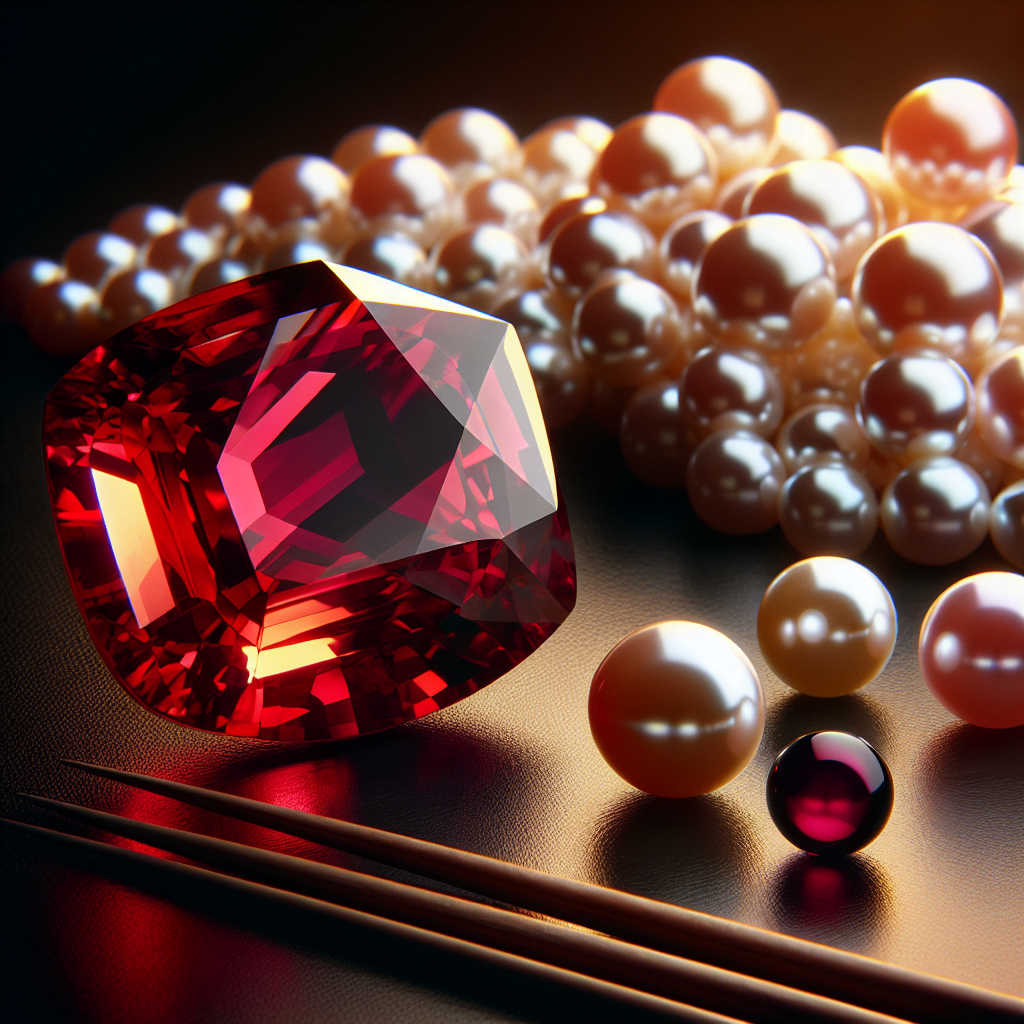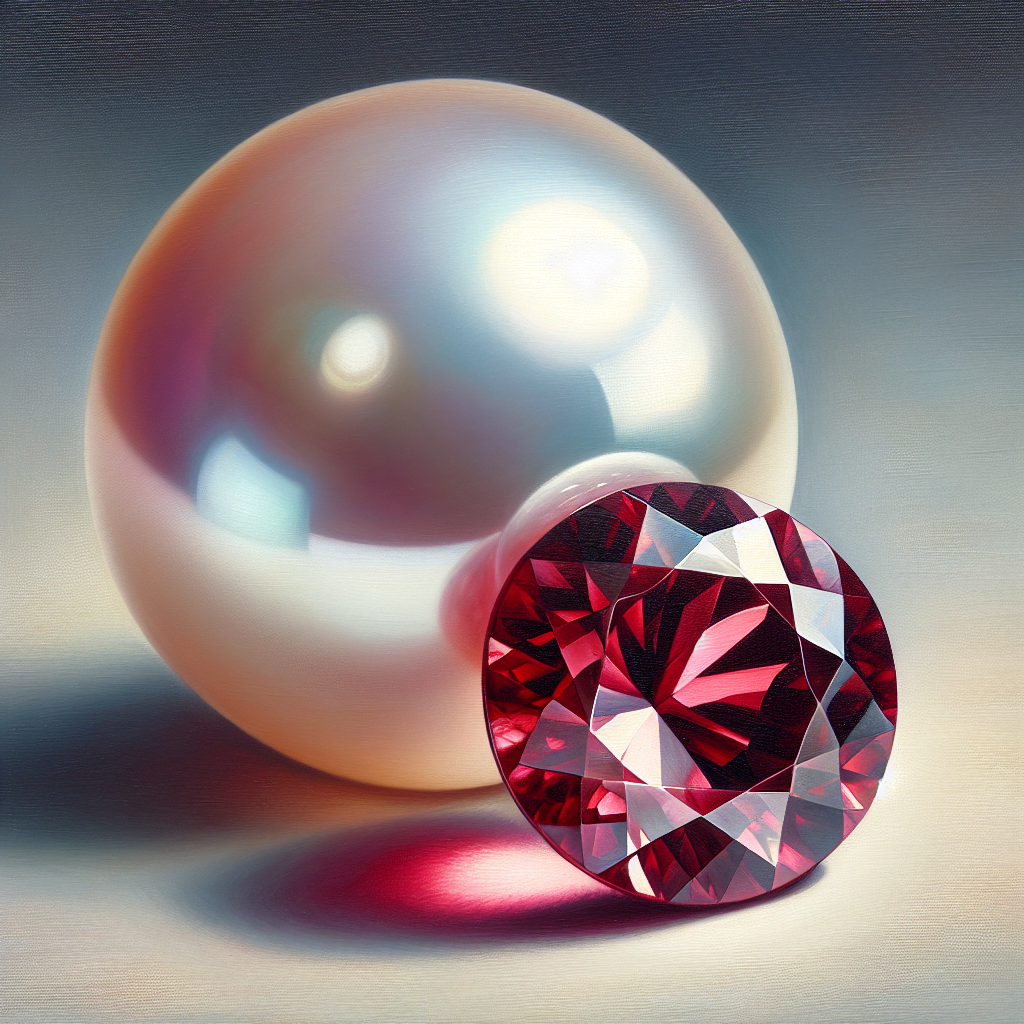Which Is Costly Ruby Or Pearl?
Which Is Costly Ruby Or Pearl? As you embark on the journey to uncover the treasure of wisdom in understanding the value of precious stones, it might’ve caught your attention: the classic face-off between Rubies and Pearls. This article will shed light on which gemstone, Ruby or Pearl, holds a heftier price tag and will guide you towards an understanding of the variables affecting their value. Get comfortable and prepare to unlock the secrets behind the cost of these bewitching pieces of nature’s art.

Understanding Rubies and Pearls
When it comes to adorning yourself with some fine jewelry, rubies and pearls are two gemstones that often come to mind. These wonderful creations from Mother Nature not only decorate your presence but also resonate with your unique spirit.
Definition of Ruby
Ruby, a stone synonymous with love, passion, and power, is a precious gemstone that garnishes rich red hues. Derived from the mineral corundum, which is also the parent of sapphires, rubies are celebrated for their vibrant colors and enchanting radiance.
Definition of Pearl
Pearls, on the other hand, represent purity, wisdom, and wealth. Unlike most gemstones, pearls aren’t mined; rather, they are fascinating products of the sea, conceived as a defense tactic by oysters and other mollusks against foreign irritants.
Understanding Gemstones
A gemstone is essentially a mineral crystal that, once cut and polished, is used to make jewelry. Rubies and pearls belong to this enchanting world of gemstones, though unique in their identities and formation. Understanding these gems, their origins, and values can be an enlightening experience.
Origins of Rubies and Pearls
Rubies and pearls originate from vastly different sources, impacting not only their alluring aesthetics but also their values.
Origins of Rubies
Primarily, rubies are mined in Asian countries such as Myanmar, Thailand, and Sri Lanka, with other significant sources in Afghanistan, Brazil, and India. They form under extensive heat and pressure deep within the earth’s crust, taking millions of years to form their trademark red hues.
Origins of Pearls
Pearls are unique in that their birthplace is living organisms – oysters and mollusks, typically in the sea. When an irritant infiltrates the mollusk’s shell, it coats the irritant with layers of a substance called nacre, leading to the formation of a pearl. Pearls can be found worldwide but are principally harvested in the waters around Japan, China, and Australia.
Impact of Origin on Price
The geographical origin of both rubies and pearls can importantly impact their prices, with certain regions recognized for producing higher quality gems. For instance, Burmese rubies often command higher prices due to their deeper and more consistent coloration. Similarly, pearls from the waters around Japan and Tahiti are prized for their luster and color.
The Market for Rubies and Pearls
The market dynamics for rubies and pearls tell a much broader story than what meets the eye, ranging from global demand to evolving trend lines.
Demand for Rubies
Rubies have long been venerated in various cultures and enjoy a robust global demand. Apart from their radiant colors, rubies are also cherished for their hardness and durability, making them ideal for everyday jewelry like rings and bracelets.
Demand for Pearls
Pearls bask in consistent demand, which transcends multiple fashion seasons. Due to their versatility and timeless elegance, pearls fit seamlessly into any attire, from bridal wear to formal office outfits.
Market Trends and Prices
As global wealth increases, so does the demand for luxury items like gemstones. Coupled with the limited supply of high-quality gems, this elevates the prices of both rubies and pearls. However, the price of pearls has remained more stable compared to rubies, mainly because pearl production is more controllable and predictable.
Calculating the Value of Rubies and Pearls
The process of assessing the value of a gemstone can be quite complex, involving several factors from size to quality and even color.
Determining a Ruby’s Worth
The value of a ruby is primarily judged on its color, with the most desirable hue resembling that of ‘pigeon’s blood’-a rich, pure, and vibrant red with a hint of blue. Clarity, cut, and carat weight also essentially impact a ruby’s price point.
Determining a Pearl’s Worth
When valuing a pearl, different factors are considered. The pearl’s luster (its reflective quality) and color, along with its size and shape, play vital roles in determining its worth. Additionally, any surface imperfections can significantly degrade a pearl’s value.
Factors Influencing Value
THowever, the factors influencing a gemstone’s value extend beyond the stone itself. Market demand, global economic conditions and the reputations of the mines they originate from, all have significant roles in the pricing of gems.

Comparison of Ruby and Pearl Prices
To compare the prices of rubies and pearls, it’s best to look at their respective prices per carat.
Average Price of Ruby per Carat
The price of ruby can vary dramatically, with high-quality specimens fetching anywhere from $1,000 to $15,000 per carat or more.
Average Price of Pearl per Carat
Pearls have a much wider price range due to the variety of types available. A freshwater pearl, for instance, might cost as little as $5 per carat, while a high-quality Tahitian pearl could command prices upwards of $200 per carat.
Overall Price Difference
By comparing the average prices per carat, it becomes evident that, in general, rubies tend to be more expensive than pearls. However, each gemstone has high-quality pieces that can fetch equally exorbitant prices.
Quality Factors Affecting Ruby and Pearl Prices
Indeed, the quality of a gemstone plays a vital role in determining its price.
How Quality Impacts Ruby Prices
The quality of a ruby is usually assessed based on its color, cut, clarity, and carat weight, often referred to as the 4Cs of gemstone evaluation. A high-quality ruby that ticks all these boxes can be significantly pricier than its lower-quality counterpart.
How Quality Impacts Pearl Prices
Like rubies, the quality of pearls is evaluated based on a set of characteristics, but they differ from the 4Cs. The primary quality factors for pearls include luster, surface quality, shape, color, and size.
Comparative Analysis of Quality Influences
While quality is a crucial factor for both rubies and pearls, the specific factors that determine quality differ between the two gemstones. Therefore, understanding the key quality metrics for each gem can assist in making informed purchasing decisions.

Rarity and Price of Rubies vs Pearls
Rarity is another significant determinant of a gemstone’s price.
Scarcity of Rubies
Quality rubies are quite rare, particularly those over a carat. This scarcity, combined with high demand, leads to inflated prices for high-end rubies. https://mauragemsandjewellery.org/european-commission-approves-ban-on-russian-diamonds/
Scarcity of Pearls
Although pearls were once extremely rare, the advent of pearl cultivation has made them more accessible. However, natural pearls—those produced without human interference—are still incredibly hard to come by and command high prices due to their rarity.
How Rarity Influences Price
As with anything else in the market, the law of supply and demand reigns supreme. Limited supply (rarity) coupled with high demand often propels the price of gemstones upwards.
Cultural and Historical Value of Rubies and Pearls
The cultural and historical value embedded within rubies and pearls significantly affect their prices too.
Historic Significance of Rubies
Rubies have a deep historical significance in many cultures, primarily in Asia, and have been treasured for centuries as symbols of wealth, power, love, and passion.
Historic Significance of Pearls
Historically, pearls have been prized for their serene beauty and perceived magical properties, earning them the title of ‘Queen of Gems.’ This rich history has undoubtedly influenced their cultural status and, consequently, their market value.
Cultural Perceptions and Their Effect on Price
The cultural significance and perceptions surrounding pearls and rubies contribute to their demand. The higher the demand, the higher the price—adding another layer to the pricing infrastructure of these gemstones.

Function and Use of Rubies and Pearls in Jewelry
The use of rubies and pearls in jewelry, and how this impacts their price, is worth exploring.
Use of Rubies in Jewelry
Thanks to their wonderful color and remarkable hardness, rubies are commonly fashioned into various jewelry, including rings, necklaces, earrings, and bracelets. Their widespread use contributes to their overall value.
Use of Pearls in Jewelry
Pearls, celebrated for their classic elegance and versatility, are a staple in jewelry design. They typically star in necklaces and earrings, but bracelets and rings containing pearls are also popular.
How Usage Impacts Price
As they are dominantly used in jewelry, the demand for rubies and pearls is relatively high, leading to elevated prices. Moreover, damage during the setting process can significantly reduce gemstone’s availability, contributing to the scarcity and further heightening their price.
Costlier Gemstone: The Final Verdict
By looking back at all the factors influencing the value of rubies and pearls, determining which is costlier can be a thought-provoking task. https://www.gia.edu/gia-bangkok
Review of Factors
Everything from the gemstone’s origins, rarity, quality factors, historical significance, and uses in jewelry contributes to their eventual price on the market.
Ruby vs Pearl: The Costlier Gem
On average, rubies tend to be pricier than pearls. But remember, exceptions abound. A large, high-quality pearl can very well exceed the price of a mid-range ruby.
Reasons Behind the Price Difference
The higher price of rubies could be attributed to their rarity and the extensive process involved in mining and refining them. In contrast, pearls—specifically cultured pearls—can be relatively more affordable due to the controlled and predictable nature of pearl farming.
In conclusion, rubies and pearls are two vibrant participants in the world of gemstones. While they each have their unique origins, qualities, and market dynamics, whether a ruby or a pearl is costlier ultimately comes down to factors like quality, size, and rarity. So, cherish whichever gemstone you feel resonates with you the most, for both are unparalleled in their beauty and vibrancy!

